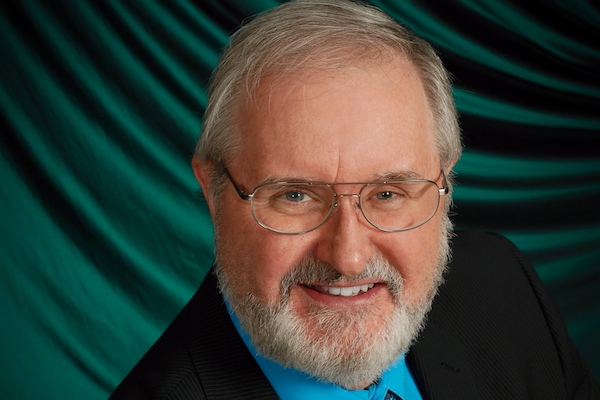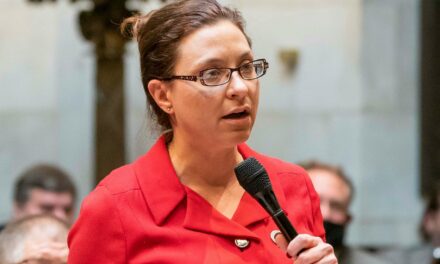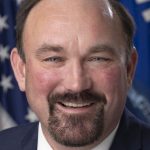
State budget puts dollars toward general dentistry residency program

The state’s 2023-25 budget puts $5 million toward creating a general dentistry residency program at Marquette University School of Dentistry. Dr. Russ Dunkel, state dental director at the Department of Health Services, said they’re working with Marquette and Aurora Health Care, part of North Carolina–based Advocate Health, on the effort.
Right now, they’re assessing costs for running the program and have yet to determine a timeline for opening. But, once the program is up and running, they hope to expand.
That could be through standalone programs in other parts of the state, like La Crosse and Green Bay, or through a “hub-and-spoke” model that could boost interaction between residencies and other educational partners, Dunkel recently told Wisconsin Health News.
Edited excerpts from the interview are below.
WHN: Why is this needed?
RD: We’ve lost residency programs (like the Max W. Pohle Clinic and others) … What happens is we get some top graduates who, through their training, get an interest in special needs, et cetera, and want additional training once they get out of school. But if we don’t have a residency program to address that, then they’re going to go somewhere else. That’s what’s been happening. Many of the students may want to come back, but life happens. When they go elsewhere, they may get married. Their significant others may have some other job setup. So they wind up not coming back to Wisconsin.
The advanced training that they get in the residency program gives them the confidence to go through and do other procedures that normally you wouldn’t have been able to do. If you go into rural areas, there may not be access to an oral surgeon or an endodontist. If you can do the procedure, it’s much more beneficial for both the patient and you as well because you keep them close to home. They don’t have to commute all over the place to get there. It addresses provider confidence as well. You come out of school. You’ve seen two or three patients a day. That residency program helps build your confidence and your skill level going forward in multiple areas and multiple aspects of dentistry.
What it also works to do is to improve medical-dental integration. That’s one of the things that I’ve pushed for years is this oral-systemic link and the fact that systems don’t separate. If it affects one system, it affects all of them. Medicine and dentistry should not be siloed, and this really helps bridge that gap. In a general practice residency, you do rotations through anesthesia, you do rotations through radiology, you work with the (emergency department) staff on a regular basis. You get multiple rotations. You also attend surgical staff meetings as well. It gives you that confidence to work better with the physicians. It creates more of a collaborative effort in treating the whole human being.
WHN: How many residents would be involved? How long would the residency last?
RD: We’d initially probably start out with two residents. With the build-out that we would do for the actual clinic that would be housed in the hospital, we would have space so that, hopefully, we could eventually bring in four residents.
There’s two ways to go with that. Typically, it’s a one-year residency program, but there are programs like, for example, at (Advocate Illinois Masonic Medical Center) where they take residents the first year, but then one resident can stay and do an advanced residency. So it’s a two-year program. That would be something that we could look at.
WHN: Will the program have any particular focuses?
RD: You usually try to hit all the specialties except maybe orthodontics. You may not get involved with that. But the residency that we’ve talked about here, we’re hoping to have a little more emphasis, possibly, on surgical and special needs aspects because the need is so great. Plus the fact that I have a real deep interest in special needs. I started the (Gardetto Family Community Dental Clinic at the St. Ann Center for Intergenerational Care), and I’ve treated special needs patients since dental school, starting in 1978. So I have a real interest in making sure that we do that.
WHN: What are some of the top dental issues in Wisconsin?
RD: One of the issues would be addressing dental health professional shortage areas. We’re definitely looking at areas, especially in rural and even some urban areas, where we just don’t have enough dentists.
With the rural area, where this residency helps is that it provides additional training, (so a dentist) feels comfortable doing more of the other aspects, to try to help prevent the patients in that area from having to travel such long distances. And the same thing with special needs. I was seeing patients five, six, seven, eight hours away at St. Ann’s, even from Michigan and Illinois, because they couldn’t get treated. If we can get individuals that are trained to do that and can have a system set up within the hospital systems in our area, people won’t have to make such long-distance travels.
This article first appeared in the Wisconsin Health News daily email newsletter. Sign up for your free trial here.





